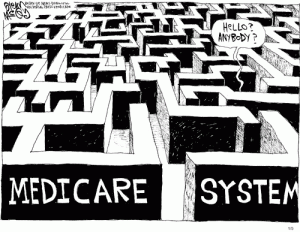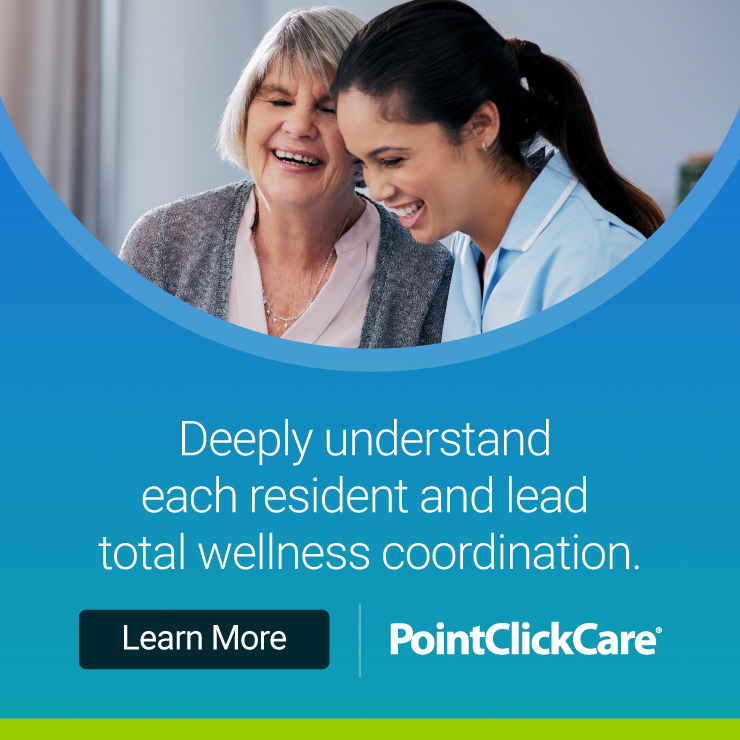By Jack Cumming
Are you in the market for senior living? Probably not. Are you in the market for better living? Who isn’t? That change of one word sure makes a difference. Could it be the key to transforming senior living into the industry that we aspire to create? You might, even now, choose co-living.
Co-Living
You may not be familiar with the co-living residential model, though it is rapidly gaining favor with young people. You’ve likely heard, though, of the tiny homes movement to promote environmentally sensitive living. Co-living involves tiny individual living units combined with expanded and enhanced, communal gathering spaces. In the common approach, co-living providers offer inclusive pricing bundles to cover the zillion nuisance charges that recur month after month.
Typical is Ollie, a co-living provider in the New York-New Jersey-Pennsylvania corridor, which offers living units that are fully-furnished and include utilities; cable; high-speed Wi-Fi; weekly “tidy ups” linen replacement, and bath amenity refills, as well as a move-in welcome kit of necessities. As with senior living, co-living also includes shared activities, parties, and onsite dining as options. (Learn more about Ollie starting tomorrow, July 1, on the Senior Living FORESIGHT podcast.)
Co-Working
An associated development, reflecting the individuality of our internet-enabled lifestyle, is that of co-working. Although many have been working from home during the pandemic, most people prefer separated home and working lives. Co-working spaces provide a work-centered environment for people who are working on their own.
These two developments create an adaptable, flexible environment that appeals particularly to younger single professionals. In addition to remote workers, it appeals to wannabe entrepreneurs with startups, as well as to people who are retiring from their careers to pursue long-deferred dreams.
Relationship Healthcare
All that’s missing to make this a perfected model for a new, more hassle-free lifestyle, is access to child care, adult care, and health care. Senior living operators know to deliver such supportive services in a residential complex. If that expertise can be expanded to include child care and primary medical care for ailing children and adults, the attractiveness of the co-living concept can become a model for all ages.
The sudden proliferation of telemedicine and its recognition by governmental planners at the Centers for Medicare and Medicaid (CMS) makes feasible the delivery of Relationship Medicine to people where they live. Imagine having your doctor as accessible as your neighbor, like a virtual neighbor, able to advise you on health choices and sparing you the intensity of conventional doctors’ visits. Co-living communities respond to the emerging lifestyle preferences of the 21st century, and senior living has the know-how and expertise to make it a reality.
The Opportunity
This can be a huge opportunity. It can appeal to prospects who may be put off by the sight of old people on walkers. In addition to co-living, co-working, and primary health care, a project might include shops, education, restaurants, and more. The opportunity is there to revive the feel of close-knit village life for a new era.
Moreover, while there is some appeal to the tiny homes model of co-living, some people will want larger units, and there is no reason why multiple, adaptable tiny units can’t be combined to respond to changing market and family-formation dynamics. The tiny unit model helps to address the affordability challenge but, for those who can afford more, adaptability can allow operators to meet their wishes. Co-living also promotes affordability with leaner staffing than traditional senior living. True, those who decline into frailty will have special needs, though that’s already a challenge for those who age at home and can be addressed when, and if, it occurs.
These trends have been underway for some time. Adapting general residential models to accommodate the needs of all ages, including the elderly, may be the restorative medicine that senior living operators have long sought. Would you welcome an inclusive lifestyle with less hassle? I would. It would be my dream life.











I would add that a co-living arrangement would need “regulators” with enforcement power and a mediation service to handle the disputes. People will be people. Some would figure out to never be the one to re-load the photocopier in the working center, creating negative attitudes in the others who are more diligent. Some may assume people are all overjoyed to share living with your sweet, lovable pet, just like you share your living with your pet. Not. Items go missing from the “communal” refrigerator, where it can still happen even if all items are labeled with the owner’s name. Some become known as never removing their items after being in the fridge for 4 years. Some will go to their vehicles to smoke, but then enter the communal areas reeking. Some will refuse to wear masks during a pandemic.
I’m happy in a CCRC, where I can check out policies before choosing my community and have a management team enforce the policies and handle “ticklish situations” as they arise.